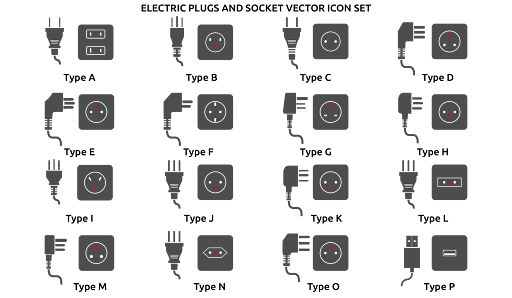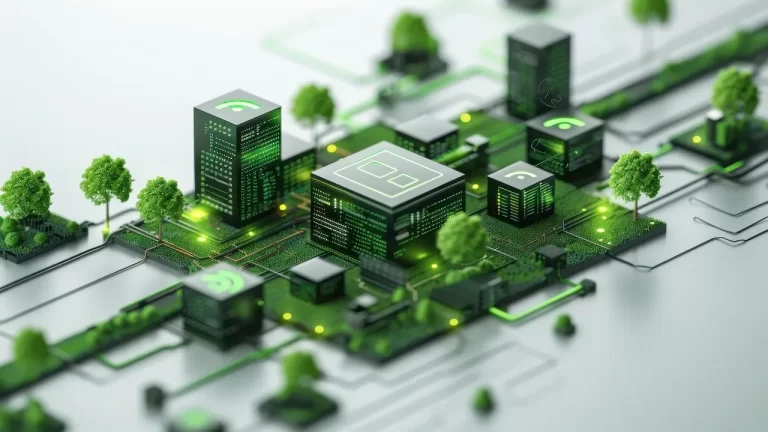Introduction
Everything from homes to massive workplaces is powered by electricity, which is foundation of modern world. Even though single-phase power is frequently utilized to common household appliances also in data centers need a more reliable and efficient way to satisfy their expanding power requirements. The primary differences between single-phase & three-phase power are examined in this article, with a focus on the reasons why data centers prefer three-phase power. Understanding these variations can also help to organizations maximize productivity, reduce expenses, and also future-proof their operations in light of the rising energy demands for modern server racks.
Understanding Single-Phase and Three-Phase Power
Let’s explore these two forms of electrical power in more detail. Homes majority run on single-phase power, which uses single alternating current (AC) voltage that fluctuates in a wave-like pattern. Neutral wire is a ground wire for safety also a pair of “hot” wires carrying power are all common in a normal home. For big devices, you obtain 240 volts AC between the two hot wires, but the majority of your household uses at 120 volts AC that is available between each hot wire & the neutral wire. Single-phase power is also commonly used to Level 1 EV battery chargers, which is operate at 120 volts but charge vehicles slowly compared to higher-powered options. The crucial aspect of single-phase power is that it truly lowers to zero numerous times per second. This flicker is normally undetectable, although it’s not the best for highly demanding equipment.
However, Three-phase electricity works similarly to three of those AC power waves, but they are offset from one another. To keep a swing going smoothly and continuously, imagine three individuals moving it at slightly different times. It’s similar to how three-phase power operates. The total power delivered never truly falls to zero because these three power waves are delayed. This makes three-phase systems ideal for powering Level 2 EV battery chargers, which operate at 240 volts and provide faster charging speeds for electric vehicles. Because of this, three-phase power is far more reliable and able to produce far more power than single-phase power at the same voltage. For locations like data centers, which have several power-hungry servers and equipment running constantly, this steady and high power delivery is innovative.
What is Single-Phase Power?
Small businesses and homes frequently use single-phase power in their electrical distribution system. Two wires are used in its operation: a neutral wire that returns the current to the source and a phase (active) wire that supplies power to the load. Multiple times every cycle, the voltage drops to zero as the alternating current (AC) flows in an irregular pattern that alternates between positive and negative peaks. Single-phase power is suited for heating, lighting, and small appliances in the United States. It usually runs at 120 volts and 60 Hz. However, compared to three-phase power systems, single-phase systems are less effective for high-demand applications because of their irregular power delivery.
Advantages:
Easy & Inexpensive: Simple equipment and wiring are less expensive for households.
Ideal for Light Weights: Effective for common household devices, TVs, and lights.
Common & Reachable: the typical power in the majority of homes.
Disadvantages:
Pulsating Power: The flow of power fluctuates and eventually reaches zero.
Insufficient for High Demand: Requires thick, expensive wires; unsuitable for massive machines or data centers.
Motor Limitations: Motors may require assistance starting and may vibrate more.
What is Three-Phase Power?
In industries like manufacturing, data centers, and also in factories. Three-phase power is very effective electrical system to distributing and also transporting electricity. It uses three alternating current (AC) sine waves spaced 120 degrees apart, as compared to single-phase electricity, which guarantees constant power delivery free of dips. This system can carry heavier gear and handle bigger loads because it only requires three wires (or occasionally four, plus a neutral). It is perfect for high-demand applications because it can deliver more power with less conductor material, guaranteeing dependability and efficiency in energy-intensive conditions.
Advantages:
Smooth and Consistent Power: Provides to steady power flow without dips to zero and making heavy machinery for more dependable and efficient.
High Power Capacity: Suitable for large HVAC systems, data centers with numerous servers, and industrial machines, it can manage far higher power loads than single-phase.
Disadvantages:
More Complex Infrastructure: May cost more to establish initially since it calls for more intricate distribution networks, wiring, and specialist equipment.
Not Usually for Houses: Because of the lower power demands, they are typically neither required nor available in the majority of residential locations.
Key Differences Between Single-Phase and Three-Phase Power
When comparing into single-phase & three-phase power, several key differences highlight their suitability for different applications. Like especially in data centers.
Below is a feature-by-feature breakdown:
| Feature | Single-Phase Power | Three-Phase Power |
|---|---|---|
| Power Delivery | Intermittent, with dips to zero | Continuous, ensuring stable power |
| Voltage Options | 120V | 120V, 208V, 400V |
| Wire Thickness | Requires thick copper wires for high loads | Thinner wires reduce installation costs |
| Efficiency | Less efficient for high-demand applications | Highly efficient for heavy loads |
| Equipment Lifespan | Shorter due to power fluctuations | Longer due to stable power supply |
| Cost | Higher long-term operational costs | Lower costs due to efficiency and reduced wiring needs |
Top 10 Countries by Voltage Standards: Single-Phase vs Three-Phase Power
Understanding voltage standards across different countries is essential to ensuring compatibility with electrical systems & devices. Below is a detailed table showcasing the top 10 countries with their single-phase and for three-phase voltage specifications, frequency, number of wires, and plug types.
Voltage Standards Across Countries
| Country | Single-Phase Voltage (Volts) | Three-Phase Voltage (Volts) | Frequency (Hertz) | Number of Wires (Excluding Ground) | Plug Type |
|---|---|---|---|---|---|
| United States | 120 V | 208 V | 60 Hz | 3 | A/B |
| India | 230 V | 400 V | 50 Hz | 4 | C/D/M |
| United Kingdom | 230 V | 415 V | 50 Hz | 4 | G |
| Australia | 230 V | 400 V | 50 Hz | 3, 4 | I |
| Germany | 230 V | 400 V | 50 Hz | 3, 4 | C/F |
| Japan | 100 V | Not Common | 50/60 Hz | 2 | A/B |
| Brazil | 127 V / 220 V | 220 V / 380 V | 60 Hz | 3, 4 | C/N |
| China | 220 V | 380 V | 50 Hz | 3 | A/C/I |
| Canada | 120 V | 208 V | 60 Hz | 3 | A/B |
| France | 230 V | 400 V | 50 Hz | 3, 4 | C/E/F |
International Electric Plug & Socket Types (A to P) – Vector Icon Set
Conclusion:
The ability to provide consistent and significant power is what separates single-phase and three-phase power. Although single-phase electricity is sufficient for residential purposes and it is not appropriate for the demanding requirements of contemporary data centers. Consistent power delivery, lower cabling costs, better scalability and also increased efficiency in high-power applications like data centers are just a few of the many benefits of three-phase power. Using three-phase power is essential for industrial facilities and data center administrators to power the digital era.
Electric Plugs And Socket Vector Icon Set








